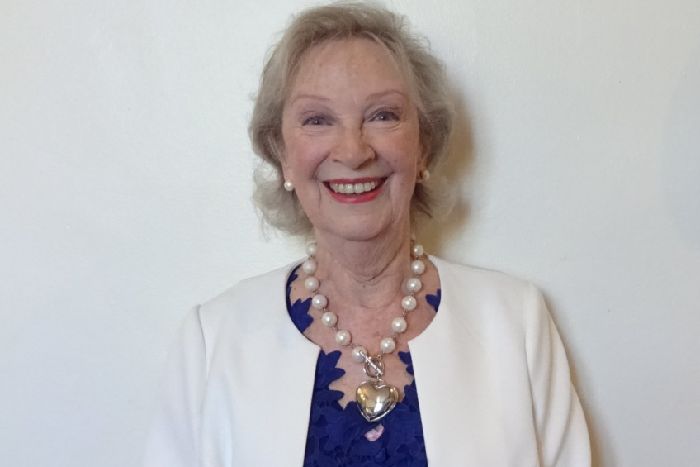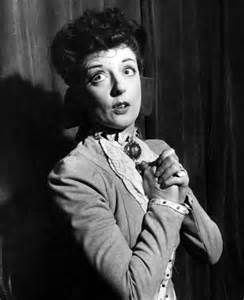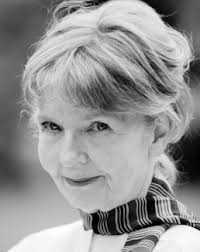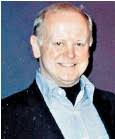One of the happiest
traditions of the Players’ Theatre Club was Pro Night,
a performance of the annual pantomime reserved for the
cast’s nearest and dearest. The following is an
account of one sucb a Night on Sunday, 25
January 1970.
The auditorium was
packed; everyone seemed to know everyone, loudly
evincing surprise and pleasure at seeing yet another
face from the past. Consequently the show started some
ten or fifteen minutes late, and I would recommend to
the management that in future the show be advertised for
at least half an hour before the actual start.
Then we can all have a good shriek up, chat to all the
people we want to chat to, gossip fervently and
generally hype ourselves up for a unique theatrical
event.
For this is what these shows at the Players’ most
certainly are. The reputation of its pantomimes
is second to none, and
maintaining the standard must present a great
challenge. How odd it is that the Players’
standard fare — the Late Joys music hall programmes —
is so precious and déjà-vu, and yet the pantomimes are so quirky and imaginative.  As usual the evening started with a handful of vintage
Late Joys turns. First on was Deryk Parkin with
a very clever version of Where Did You Get That Hat?
featuring specially written verses to accommodate his
deftly manipulated all-purpose hat. He was
cheered mightily. Then Robin Hunter (left) appeared in a
loud check suit, bowler, and red nose.
Theoretically he was to sing
for us, but the number was merely an excuse for one of
the funniest patter acts I have ever seen. It
was very pro-y — a reference
to the minuteness of the dressing-rooms got a
roar — and quite
irresistible (i).
As usual the evening started with a handful of vintage
Late Joys turns. First on was Deryk Parkin with
a very clever version of Where Did You Get That Hat?
featuring specially written verses to accommodate his
deftly manipulated all-purpose hat. He was
cheered mightily. Then Robin Hunter (left) appeared in a
loud check suit, bowler, and red nose.
Theoretically he was to sing
for us, but the number was merely an excuse for one of
the funniest patter acts I have ever seen. It
was very pro-y — a reference
to the minuteness of the dressing-rooms got a
roar — and quite
irresistible (i).
 Robin was followed by the delicious Sheila Mathews (right)
who is currently understudying Anna Neagle in Charlie
Girl at the Vaudeville. With her slim graceful figure,
lovely face and gorgeously warm voice Sheila has long
been a favourite of mine (I once wrote her a fan
letter) and her captivating performance of The
Corsican Maid was rapturously received.
Robin was followed by the delicious Sheila Mathews (right)
who is currently understudying Anna Neagle in Charlie
Girl at the Vaudeville. With her slim graceful figure,
lovely face and gorgeously warm voice Sheila has long
been a favourite of mine (I once wrote her a fan
letter) and her captivating performance of The
Corsican Maid was rapturously received.
Then came John Rutland, another Players’ stalwart, with one of his signature patter numbers, Everybody Knows Me In My Old Brown Hat delivered at breakneck speed. He was also wildly applauded and rightly so. Finally, a splendidly comic version of If Those Lips Could Only Speak, sun g
by three gentlemen DR and with the inimitable Joan
Sterndale Bennett (left) poised archly on a
pedestal UC as the ‘beautiful
picture in a beautiful golden frame’, a performance
which encapsulated the Players’ at its stylish
best.
g
by three gentlemen DR and with the inimitable Joan
Sterndale Bennett (left) poised archly on a
pedestal UC as the ‘beautiful
picture in a beautiful golden frame’, a performance
which encapsulated the Players’ at its stylish
best.
Dominic Le Foe, fresh from a rather unsuccessful Music Hall at the Mayfair (Caryl Brahms tore him to bits in the Guardian and had to apologise in print a day or two later) was the chairman. A witty man but lacking projection, his contribution to the evening adequate but uninspired (ii).
This year’s panto subject was Aladdin or The Wonderful Scamp!, given with a Welsh flavour. The original 1861 script of rhyming couplets was by that prolific melodrama and burlesque writer, Henry J. Byron, with up-to-date additions by Denis Martin who also selected the music (iii). As usual, it was a stunningly polished display of high camp. Such a show could never be a commercial proposition: its appeal is too limited, but for Players’ aficionados it was a total treat.
The pace was swift and the staging of the musical numbers quite brilliant. Such is the kudos of appearing in these productions that despite the measly salary of £18 a week the director Don Gemmell has no difficulty in attracting first-rate talent. And yet again he has worked miracles on the small stage with the lighting and scenery — there were three transformation scenes, no less (iv). From curtain rise as a chorus of miners crawled out of Aladdin’s Cave bearing the magic Davy Lamp through to the Minstrel-Eisteddford finale which included the ‘Transvestiture’, all was enchantment (v). The Slave of the Lamp was, of course, ‘Florence (The Lady with the Lamp) Nightingale’, played delightfully by Margaret Ashton (vi). Johnny Dennis exhibited polish and a good deal of charm as the Slave of the Ring, and provided virtually the only quiet moment in the piece with his rendering of Genie With The Light Brown Hair (vii).
 Julia
Sutton (right) as Aladdin possesses a powerful
personality with a belting voice to match. Another
vocal highlight was provided by Rosalyn Dunbar as
Princess Balroubador whose parody of Lo, Here the
Gentle Lark while hanging out the washing on her
father’s outstretched pigtail brought the house
down. She looked ravishingly pretty, and I loved
the way she firmly silenced the house whenever there
was a gag line to punch.
Julia
Sutton (right) as Aladdin possesses a powerful
personality with a belting voice to match. Another
vocal highlight was provided by Rosalyn Dunbar as
Princess Balroubador whose parody of Lo, Here the
Gentle Lark while hanging out the washing on her
father’s outstretched pigtail brought the house
down. She looked ravishingly pretty, and I loved
the way she firmly silenced the house whenever there
was a gag line to punch.
But the palm must go to Robin Hunter’s Olivier-ish Abanazer. A monster of duplicity, with his fur-lined coat, battered top hat and magic umbrella, he looked like some seedy actor-manager still in his Shylock make-up. He revelled in his villainy to an extent I have never seen before; and we revelled in it, and he revelled in our revelling in it. It was a love affair across the floats such as only happens rarely, and resulted in a performance touching greatness. His faking of a high final top note was one of my all-time memorable moments in the theatre.
 The vocal arrangements of Geoffrey Brawn (left) were
impeccable as always, and his piano accompaniment
beyond praise (viii). The sole weakness, musically,
was the finale of the first act. The tune was
unfamiliar, and the pace too fast for us to catch the
words. Consequently we lost the plot and the
point.
The vocal arrangements of Geoffrey Brawn (left) were
impeccable as always, and his piano accompaniment
beyond praise (viii). The sole weakness, musically,
was the finale of the first act. The tune was
unfamiliar, and the pace too fast for us to catch the
words. Consequently we lost the plot and the
point.
Tony Bateman as The Emperor, coped very well indeed with a difficult part; his duet with the Dame was one of the best numbers in the show — one would have liked an encore, it was so short. Eleanor McCready managed to make something of the thankless part of the second boy, Pekoe, but then we all know what a clever artiste she can be. Susan Jackson as second girl (‘Lady-in-Waiting, but Not For Long’) had indeed to wait a long time for her moment of glory but took it very well indeed. A sweet voice and an excellent sense of comedy.
The costumes were top-notch, and the scenery simple but wonderfully effective, Reggie Woolley’s designs exhibiting marvels of spectacle and perspective (ix). My only caveat of the show is that there is too much comedy, giving us no opportunity to enjoy the plot. One was never moved at any point, one was never involved. With the sole exception of Johnny Dennis’s song there was little emotive appeal, and that came a little too near the start of the show. But all the same a triumphant evening, and one which made me proud to be a Pro.
 Robin was followed by the delicious Sheila Mathews (right)
who is currently understudying Anna Neagle in Charlie
Girl at the Vaudeville. With her slim graceful figure,
lovely face and gorgeously warm voice Sheila has long
been a favourite of mine (I once wrote her a fan
letter) and her captivating performance of The
Corsican Maid was rapturously received.
Robin was followed by the delicious Sheila Mathews (right)
who is currently understudying Anna Neagle in Charlie
Girl at the Vaudeville. With her slim graceful figure,
lovely face and gorgeously warm voice Sheila has long
been a favourite of mine (I once wrote her a fan
letter) and her captivating performance of The
Corsican Maid was rapturously received.Then came John Rutland, another Players’ stalwart, with one of his signature patter numbers, Everybody Knows Me In My Old Brown Hat delivered at breakneck speed. He was also wildly applauded and rightly so. Finally, a splendidly comic version of If Those Lips Could Only Speak, sun
 g
by three gentlemen DR and with the inimitable Joan
Sterndale Bennett (left) poised archly on a
pedestal UC as the ‘beautiful
picture in a beautiful golden frame’, a performance
which encapsulated the Players’ at its stylish
best.
g
by three gentlemen DR and with the inimitable Joan
Sterndale Bennett (left) poised archly on a
pedestal UC as the ‘beautiful
picture in a beautiful golden frame’, a performance
which encapsulated the Players’ at its stylish
best. Dominic Le Foe, fresh from a rather unsuccessful Music Hall at the Mayfair (Caryl Brahms tore him to bits in the Guardian and had to apologise in print a day or two later) was the chairman. A witty man but lacking projection, his contribution to the evening adequate but uninspired (ii).
This year’s panto subject was Aladdin or The Wonderful Scamp!, given with a Welsh flavour. The original 1861 script of rhyming couplets was by that prolific melodrama and burlesque writer, Henry J. Byron, with up-to-date additions by Denis Martin who also selected the music (iii). As usual, it was a stunningly polished display of high camp. Such a show could never be a commercial proposition: its appeal is too limited, but for Players’ aficionados it was a total treat.
The pace was swift and the staging of the musical numbers quite brilliant. Such is the kudos of appearing in these productions that despite the measly salary of £18 a week the director Don Gemmell has no difficulty in attracting first-rate talent. And yet again he has worked miracles on the small stage with the lighting and scenery — there were three transformation scenes, no less (iv). From curtain rise as a chorus of miners crawled out of Aladdin’s Cave bearing the magic Davy Lamp through to the Minstrel-Eisteddford finale which included the ‘Transvestiture’, all was enchantment (v). The Slave of the Lamp was, of course, ‘Florence (The Lady with the Lamp) Nightingale’, played delightfully by Margaret Ashton (vi). Johnny Dennis exhibited polish and a good deal of charm as the Slave of the Ring, and provided virtually the only quiet moment in the piece with his rendering of Genie With The Light Brown Hair (vii).
 Julia
Sutton (right) as Aladdin possesses a powerful
personality with a belting voice to match. Another
vocal highlight was provided by Rosalyn Dunbar as
Princess Balroubador whose parody of Lo, Here the
Gentle Lark while hanging out the washing on her
father’s outstretched pigtail brought the house
down. She looked ravishingly pretty, and I loved
the way she firmly silenced the house whenever there
was a gag line to punch.
Julia
Sutton (right) as Aladdin possesses a powerful
personality with a belting voice to match. Another
vocal highlight was provided by Rosalyn Dunbar as
Princess Balroubador whose parody of Lo, Here the
Gentle Lark while hanging out the washing on her
father’s outstretched pigtail brought the house
down. She looked ravishingly pretty, and I loved
the way she firmly silenced the house whenever there
was a gag line to punch.But the palm must go to Robin Hunter’s Olivier-ish Abanazer. A monster of duplicity, with his fur-lined coat, battered top hat and magic umbrella, he looked like some seedy actor-manager still in his Shylock make-up. He revelled in his villainy to an extent I have never seen before; and we revelled in it, and he revelled in our revelling in it. It was a love affair across the floats such as only happens rarely, and resulted in a performance touching greatness. His faking of a high final top note was one of my all-time memorable moments in the theatre.
 The vocal arrangements of Geoffrey Brawn (left) were
impeccable as always, and his piano accompaniment
beyond praise (viii). The sole weakness, musically,
was the finale of the first act. The tune was
unfamiliar, and the pace too fast for us to catch the
words. Consequently we lost the plot and the
point.
The vocal arrangements of Geoffrey Brawn (left) were
impeccable as always, and his piano accompaniment
beyond praise (viii). The sole weakness, musically,
was the finale of the first act. The tune was
unfamiliar, and the pace too fast for us to catch the
words. Consequently we lost the plot and the
point. Tony Bateman as The Emperor, coped very well indeed with a difficult part; his duet with the Dame was one of the best numbers in the show — one would have liked an encore, it was so short. Eleanor McCready managed to make something of the thankless part of the second boy, Pekoe, but then we all know what a clever artiste she can be. Susan Jackson as second girl (‘Lady-in-Waiting, but Not For Long’) had indeed to wait a long time for her moment of glory but took it very well indeed. A sweet voice and an excellent sense of comedy.
The costumes were top-notch, and the scenery simple but wonderfully effective, Reggie Woolley’s designs exhibiting marvels of spectacle and perspective (ix). My only caveat of the show is that there is too much comedy, giving us no opportunity to enjoy the plot. One was never moved at any point, one was never involved. With the sole exception of Johnny Dennis’s song there was little emotive appeal, and that came a little too near the start of the show. But all the same a triumphant evening, and one which made me proud to be a Pro.
i Robin Hunter (1929-2004) was the son of stage and film actor Ian Hunter.
ii Né Arthur Cooper-Smith (1932-2010). From c.2000 sole director of the Players’.
iii Denis Martin (c1923-88). Irish tenor and a director of the Players'.
iv Don Gemmell (1903-82). First appeared at the Players’ 1939; a director from 1948.
v The Transvestiture sequence was a spoof of the Investiture of the Prince of Wales which
had taken place the previous July at Caernarfon Castle. A huge laugh was the appearance of a dancer as the Earl of Snowdon in his self-designed uniform as Constable of the Castle.
vi Mrs Dominic Le Foe. Judicially separated 2001.
vii Johnny Dennis (1940-2016), regular Players’ comic and chairman. Sometime President of
the Green Room Club and Chairman of the British Music Hall Society. Honorand of the
MCC and the Garrick Club.
viii Geoffrey Brawn (1935-2018) first engaged at the Players’ 1961, a six-week engagement
which lasted forty-one years. Made a director 1988; resigned c.2000 but remained Musical
Director.
ix Both lighting and scenery were by Reginald Woolley (1912-93), Don Gemmell’s life-long
partner. Started at the Players’ 1939; a director from 1948. Once declared the Players’ to
be the only employment he’d ever had.
Brief History of The
Players’ Theatre Club (originally est. 1928)
When W. C. Evans took
over Joy’s family hotel at 43 King Street, Covent
Garden, in the late 1820s, he advertised his new Song
and Supper Room in the basement as Evans’s Late
Joy’s. Just over a century later, in December 1937
on the third floor, Peter Ridgeway produced the first
Players’ revival of nineteenth-century popular
entertainment under the title Ridgeway’s Late Joys. He
died the following year, but the foundations had been
laid and Late Joys bills were presented in identical
format for the next sixty-four years. Not
until 25 March 2002, having survived WWII in a basement
off Piccadilly and now ensconced in purpose-built
premises under Charing Cross Station, was the Club
finally forced to close after a bailiffs’
lock-out. Despite divers attempts by sundry groups
and individuals, it never re-opened. For full
details see Twilight of 'The Joys' (chapter 7 on
this website).